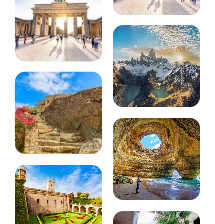
Visiting the Vatican in Rome: prices and practical information
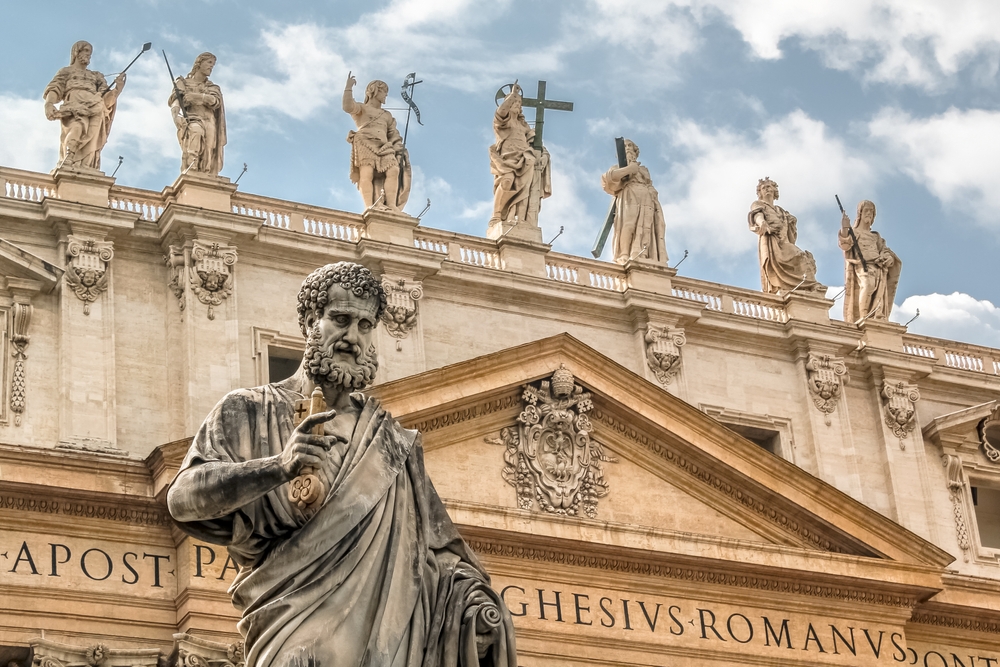
The Vatican, the world’s smallest state nestled in the heart of Rome, is one of the most visited tourist sites on the planet. With its prestigious museums, Sistine Chapel and St Peter’s Basilica, this major centre of Christianity attracts millions of visitors every year, who are amazed by its artistic and architectural treasures. Whether you’re an art lover, history buff or simply curious, a visit to the Vatican is a must during your stay in the Eternal City. Here’s all the practical information you need to organise your visit to Vatican City.

Also read the Rome guide:
- 12 free things to do and see in Rome
- 14 must-see museums in Rome
- Top 14 culinary specialities in Rome
- Top 8 things to do in Rome
- St Peter’s Square in Rome, the Vatican’s most famous square
- Find out all about the Trevi Fountain in Rome!
- Natale di Roma: come and celebrate Rome’s birthday!
How do I get to the Vatican?

The Vatican is located in the western quarter of Rome, close to the Tiber. There are several means of transport that make it easy to reach this emblematic site from anywhere in the Italian capital.
By metro
Line A of the Roman underground is the quickest way to get to the Vatican. There are two stations in the immediate vicinity: Ottaviano-San Pietro and Cipro. Ottaviano-San Pietro is the most convenient option, as it leaves you just 5 minutes’ walk from St Peter’s Square. From Termini station, the journey takes around 15 minutes. Metro tickets cost €1.50 and are valid for 100 minutes on the entire public transport network.
By bus
Several bus routes serve the Vatican and the surrounding area. Routes 64, 40, 62 and 81 start at Termini and stop near Via della Conciliazione or Piazza Risorgimento. Bus 64, nicknamed the “pickpockets’ bus” because of its high tourist numbers, runs directly from Termini to the Vatican in around thirty minutes. Be careful with your personal belongings during the journey.
On foot
If you’re staying in Rome’s historic centre, walking to the Vatican is an excellent way to discover the city. From the Pantheon or Piazza Navona, allow around 20 to 30 minutes for a pleasant walk along the narrow Roman streets. The Navaway audioguide itinerary takes you right from the historic centre to the Vatican, showing you Rome’s most beautiful monuments along the way.
By taxi or VTC
Official white taxis and VTC services such as Uber work perfectly in Rome. A journey from Termini to the Vatican costs around €15-20. This is convenient if you’re travelling in a group or with children, but traffic jams can add considerably to journey times at peak times.
Vatican opening times

Times vary according to the different sites you wish to visit in the Vatican. You should plan your day carefully to make the most of your time there.
Vatican Museums and Sistine Chapel
The Vatican Museums, which include a visit to the Sistine Chapel, are open Monday to Saturday from 8am to 8pm (last admission at 6pm). On the last Sunday of each month, the Museums are exceptionally open from 9am to 2pm (last entry at 12.30pm). Beware, however: this free admission attracts huge crowds, and queues can last for several hours. The museums remain closed on Sundays (except the last Sunday of the month), as well as on certain important religious holidays such as Easter, 29 June (St Peter and St Paul), 25 and 26 December.
Saint Peter’s Basilica
St Peter’s Basilica is open to visitors every day from 7am to 7pm from April to September, and from 7am to 6.30pm from October to March. Admission to the basilica is free, but be prepared to queue, especially during the peak tourist season. On Wednesday mornings, access may be disrupted due to the papal audience held in St Peter’s Square. The dome of the basilica can be visited from 8am to 6pm in summer and until 5pm in winter, with final access one hour before closing time.
Vatican Gardens
The magnificent Vatican Gardens can only be visited by prior arrangement, as part of an organised guided tour. These tours usually take place in the morning and last around two hours. The number of places is very limited, so book several weeks in advance if you want to discover these green spaces that are little-known to the general public.
Prices and tickets for the Vatican
Understanding the Vatican’s pricing structure will help you prepare your budget more effectively and choose the package that suits you best.
Vatican Museums and Sistine Chapel
Official admission to the Vatican Museums is €20 for the full price (purchase on site without reservation). Young people aged 6 to 18 and students up to the age of 25 benefit from a reduced rate of €8. Admission is free for children under 6. If you book online via the official website, you will have to add a €5 booking fee, but this modest extra cost guarantees you a time slot and saves you hours of waiting. Third-party booking sites generally offer tickets for between €30 and €45, sometimes including an audio guide or guided tour.
Saint Peter’s Basilica
Entrance to St Peter’s Basilica is still completely free. However, if you wish to climb to the top of the dome to enjoy an exceptional panoramic view of Rome, you will have to pay €10 if you take the lift up to the terrace (there are still 320 steps to climb), or €8 if you climb the 551 steps on foot from the ground. The climb is well worth the effort, with a unique view of the Eternal City.
Combined passes and packages
Several tourist passes include access to the Vatican in their offer. The Roma Pass, although advantageous for many Roman sites, unfortunately does not include the Vatican Museums, which are an independent state. Some tour operators offer packages combining the Vatican, Colosseum and other Roman monuments, with transport and guide included. You should compare these offers carefully, as they are not always cheaper than direct bookings.
Download the audio tour to discover Rome on foot and on your own
To make the most of your stay in Rome, download the Navaway audio guide to Rome. This intelligent itinerary guides you through the narrow streets of the Italian capital, from the Colosseum to the Vatican, passing by all the must-see monuments. Thanks to the audio commentary available in French, you can discover the fascinating history of each place at your own pace, without having to rely on the imposed timetables of traditional guided tours.
What to see and do in the Vatican
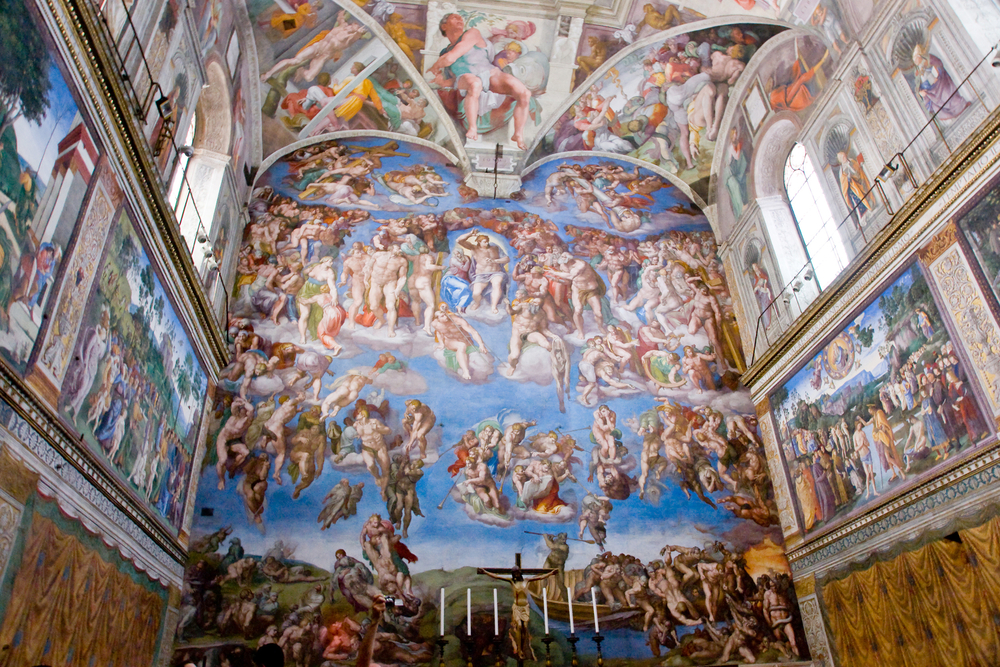
The Vatican is packed with artistic and architectural treasures that are well worth devoting a whole day to. Here are the must-see sites for your visit.
1. The Vatican Museums
The Vatican Museums are one of the largest museum complexes in the world, housing a collection of art and historical objects accumulated by popes since the 16th century. The tour covers almost 7 kilometres and features works ranging from Antiquity to contemporary art. Among the most remarkable sections, don’t miss the Pio-Clementino museum with its ancient sculptures, the tapestry gallery with its monumental Flemish hangings, and the 120-metre-long gallery of geographical maps.
2. The Sistine Chapel
The highlight of a visit to the museums is the Sistine Chapel, with its magnificent frescoes. The ceiling, painted by Michelangelo between 1508 and 1512, depicts scenes from Genesis, including the famous Creation of Adam. The altar wall features the Last Judgement, also painted by Michelangelo several decades later. This chapel is still used today as the setting for conclaves to elect popes. Please note that photography and video are strictly forbidden in the Sistine Chapel, and absolute silence must be observed.
3. Raphaël’s rooms
These four rooms, decorated by Raphael and his pupils between 1508 and 1524, are another jewel in the crown of the Vatican Museums. The Hall of the Signature houses “The School of Athens”, an absolute masterpiece of the Renaissance, depicting the greatest philosophers of Antiquity. The frescoes illustrate philosophy, theology, poetry and justice, themes dear to the papacy of the time.
4. St. Peter’s Basilica
Built over the presumed tomb of the Apostle Peter, St Peter’s Basilica impresses with its colossal dimensions and rich ornamentation. The central nave is 211 metres long, making it one of the largest Christian churches in the world. Inside, admire Michelangelo’s Pietà, an exceptionally fine marble sculpture created when the artist was just 24 years old, and Bernini’s baroque bronze baldachin over the high altar. The dome designed by Michelangelo reaches a height of 136 metres and offers a spectacular view of Rome and the Vatican gardens.
5. Place Saint-Pierre
This monumental square, designed by Bernini in the 17th century, regularly hosts papal ceremonies and can hold up to 300,000 people. Its elliptical colonnade of 284 Doric columns symbolises the arms of the Church welcoming the faithful. In the centre sits an Egyptian obelisk brought to Rome by the Emperor Caligula. On Wednesday mornings, when the Pope holds an audience, the special atmosphere of the square is well worth a visit, even if access to the museums may be disrupted. The Navaway itinerary allows you to discover St Peter’s Square in context, after passing through some of Rome’s most beautiful districts.
6. The Vatican Gardens
Covering 23 hectares – more than half of the Vatican’s total surface area – the gardens are a haven of peace that is little-known to visitors. Laid out since the 13th century, they combine Italian, English and French styles, with fountains, sculptures and small shrines. The compulsory guided tour takes you to the secret side of the Vatican, away from the hustle and bustle of the museums.
Book tickets for the Vatican
Booking your tickets in advance is the key to a successful visit to the Vatican. Without a reservation, you run the risk of waiting several hours under the Roman sun, especially in high season.
Official Vatican website
The official website of the Vatican Museums (museivaticani.va) offers a reliable and secure online booking system. You will need to select a specific date and time slot for your visit. This booking guarantees you entry to the Museums and the Sistine Chapel without having to wait long. The ticketing system generally opens bookings around two months in advance. During peak periods (Easter, summer, Christmas), the most popular slots fill up quickly.
Other booking platforms
Numerous tourist sites offer skip-the-line tickets to the Vatican, often at higher prices than the official website. However, these platforms sometimes offer interesting additional services: French-language audioguides, guided tours in small groups, even faster priority access, or combined packages with other Roman sites. Read the conditions carefully and compare the offers before booking.
Guided tours
Guided tours are an excellent way of really understanding the works on display at the Vatican. An experienced guide will take you straight to the masterpieces, avoiding the less interesting sections, while providing valuable historical and artistic insights. Tours are available in French but are less frequent than those in English or Italian. For a more intimate and flexible experience, opt for the Navaway audioguide, which lets you explore Rome and the Vatican at your own pace.
Dress code and rules
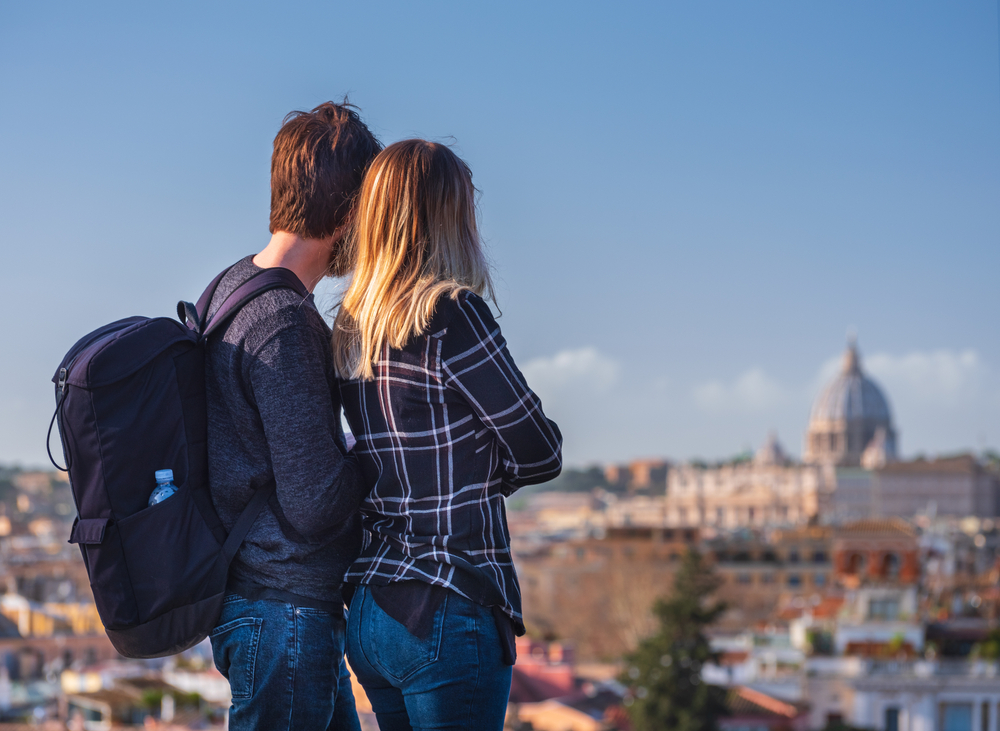
The Vatican applies a strict dress code that all visitors must respect or they will be refused entry. These rules apply to both the museums and St Peter’s Basilica.
Compulsory dress
Shoulders and knees must be covered to access Vatican sites. The following are therefore prohibited: tank tops, tops with thin straps, short shorts, miniskirts, low-cut dresses and transparent clothing. This rule applies to all visitors, men and women alike, whatever the season. Even in the heat of summer, you’ll need to wear appropriate clothing. Bring a scarf or light scarf to cover your shoulders if necessary, and prefer light trousers or a long skirt to shorts.
Prohibited accessories
Hats and caps must be removed inside religious buildings. Large rucksacks are not permitted and must be left at the free cloakroom at the entrance to the museums. If you are carrying a photo tripod, large umbrellas or walking sticks (except those needed for walking), you must also leave them at the cloakroom.
Rules of conduct
Silence and respect are essential in all areas of the Vatican. In the Sistine Chapel, guards regularly call noisy visitors to order. Photography is permitted in most museums (without flash), but strictly forbidden in the Sistine Chapel. Eating, drinking and smoking are prohibited in all museums. Drinking water fountains are available in the gardens and in some squares to quench your thirst.
Practical tips for visiting the Vatican
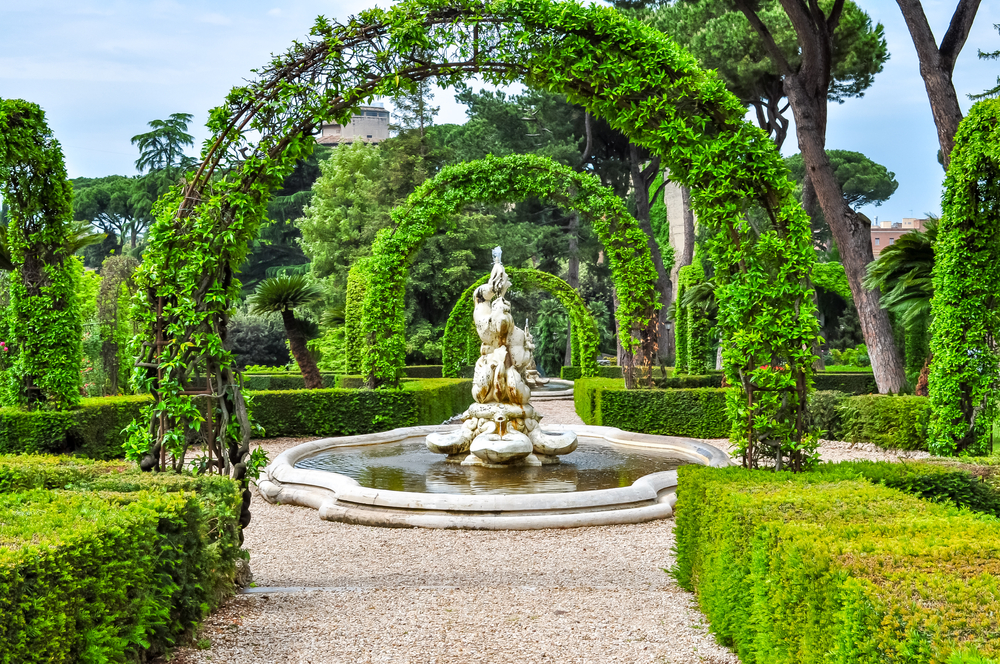
A few tips will help you make the most of your visit and avoid the most common problems encountered by tourists to the Vatican.
Best time to visit
The Vatican sees record numbers of visitors all year round, but some periods are less busy than others. November to February generally offer a more pleasant experience with fewer visitors. Absolutely avoid the months of July and August, when the crowds and heat make for a trying visit. During the week, Tuesdays and Thursdays are less crowded than Mondays (when many Roman museums are closed) and Fridays (which are close to the weekend). On Wednesdays, the papal audience disrupts access and generates large crowds. In terms of timetable, arrive as soon as the museum opens at 8am to take advantage of the relative peace and quiet in the first rooms, or opt for the late afternoon after 4pm when the tourist groups start to leave.
Recommended length of visit
Allow at least 3 hours for an accelerated tour of the Vatican Museums and the Sistine Chapel. For a fuller, more leisurely tour, allow 4 to 5 hours. If you add a visit to St Peter’s Basilica and a climb up the dome, a full day becomes necessary. The basilica alone is worth 1? to 2 hours. Don’t underestimate the physical strain involved: the museums require you to walk several kilometres, and the climb up the dome is particularly strenuous.
On-site services
The Vatican Museums have several cafeterias and food outlets, but prices are quite high. If you’re on a tight budget, try eating out in the surrounding area, where you’ll find plenty of restaurants at more reasonable prices. Toilets are available at various points along the museum route. There is a free cloakroom where you can leave your bulky belongings. A well-stocked bookshop offers books on the art and history of the Vatican, as well as reproductions of works.
Accessibility
The Vatican Museums are generally accessible to people with reduced mobility, thanks to the lifts and ramps installed in most sections. A specially adapted route allows visitors to see the main works of art without taking the stairs. Access to St Peter’s Basilica is still easy at ground level, but climbing the dome is impossible for wheelchair users or those with mobility problems. Find out more beforehand on the official website to organise your visit in the best possible conditions.
Visiting with children
The Vatican is a great place to visit as a family, but the length of the tour can be tiring for younger visitors. Choose a visit that focuses on the most spectacular works rather than an exhaustive tour. The Sistine Chapel generally fascinates children with its size and brilliant colours. To make the visit more fun, download beforehand game booklets or mobile applications specially designed for young visitors. In St Peter’s Square, children will enjoy looking for the exact point where the columns of the colonnade line up perfectly.
How long will it take to visit the Vatican?
The question of how long it will take to visit the Vatican comes up frequently. The answer largely depends on your level of interest in art and history, as well as your personal pace of visit.
For an express tour focusing solely on the must-sees (the Gallery of Cards, Raphael’s chambers and the Sistine Chapel), allow around 2? to 3 hours. This option is ideal for visitors in a hurry or with a moderate interest in the collections.
For a complete visit to the museums and the Sistine Chapel, allow 4 to 5 hours. This timing allows you to explore the different sections more leisurely, take a few breaks, and really appreciate the works without running.
If you wish to add a visit to St Peter’s Basilica without going up to the dome, add 1? to 2 hours. The basilica is well worth taking the time to go all the way round to admire all its chapels and works of art.
Finally, for a full day at the Vatican, including museums, the Sistine Chapel, St Peter’s Basilica and a climb up the Duomo, allow 6 to 7 hours on site. This comprehensive package is aimed at art and architecture enthusiasts who want to see everything in detail. Don’t forget to include in your timetable any waiting time at the entrance (even with a reservation, there is still a short wait for security checks) and a lunch break to recharge your batteries.
Where to eat near the Vatican?
The Vatican area is full of restaurants, pizzerias and trattorias to suit all budgets. Beware, however, of the tourist traps immediately around St Peter’s Square, which often charge excessive prices for mediocre quality.
To find good, authentic places to eat, move a few streets away from the ultra-touristy areas. The Prati district, right next to the Vatican, offers excellent options frequented by the Romans themselves. Via Cola di Rienzo and the surrounding area are home to numerous restaurants serving traditional cuisine at reasonable prices. For a quick and economical break, opt for a slice of pizza al taglio (pizza sold by weight) in one of the many takeaway pizzerias in the area. You can then enjoy a picnic on the banks of the River Tiber nearby. If you prefer a proper sit-down meal, book a table at a local trattoria where you can enjoy delicious Roman pastas such as cacio e pepe or the authentic carbonara. By following the Navaway itinerary, you’ll also discover some excellent restaurants along your route through Rome.
Is it possible to visit the Vatican for free?
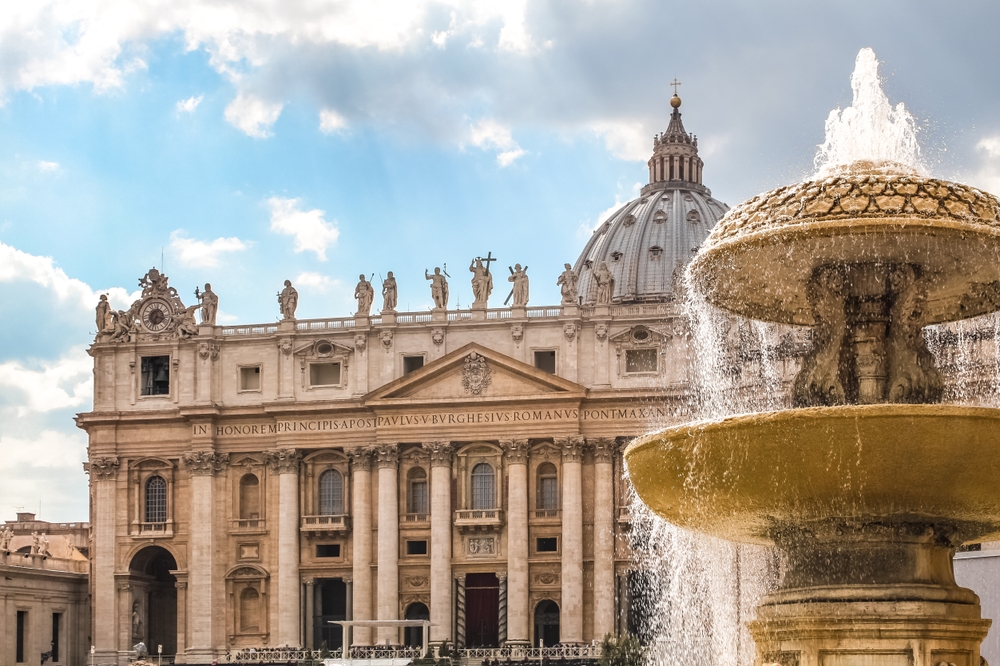
If you’re on a tight travel budget, you should know that there are a number of opportunities to visit some of the Vatican’s sites for free or at a reduced cost.
St Peter’s Basilica is free to visit every day. All you have to do is wait in the queue to get through the security checks. This basilica alone is worth the trip to the Vatican, with its impressive dimensions and artistic treasures such as Michelangelo’s Pietà.
The Vatican Museums and the Sistine Chapel open their doors free of charge on the last Sunday of every month, from 9am to 12.30pm (last admission). Logically, this free admission attracts huge crowds, with queues lasting up to 3 or 4 hours. If you opt for this low-cost solution, arrive as early as 7.30am to stand a chance of getting in within a reasonable time. Note also that this free admission does not apply if the last Sunday falls on a religious holiday (Easter, 29 June, 25 or 26 December).
St Peter’s Square is accessible free of charge at all hours. You can stroll around freely, admire Bernini’s colonnade and the Egyptian obelisk, and attend the papal audiences on Wednesday mornings (with free prior registration). The unique atmosphere of this monumental square is well worth a visit, even if you’re not visiting the museums.
For holders of tourist guide or art history student cards, substantial reductions or free admission may apply. Find out about the conditions of eligibility beforehand.
In conclusion, a visit to the Vatican is a must during your stay in Rome. With its Renaissance masterpieces, grandiose architecture and millennia of history, this small state boasts an exceptional density of cultural treasures. If you prepare well, book your tickets in advance and respect the rules on dress, you’ll make the most of this unique experience. Don’t forget to complement your discovery of the Vatican with an in-depth exploration of Rome by downloading the Navaway app, which will guide you through the Eternal City’s most beautiful monuments, from the Colosseum to St Peter’s Square. Let yourself be carried away by the French audio guides, which bring to life the fascinating history of the Italian capital and transform your stroll into a true cultural immersion.
Frequently asked questions about visiting the Vatican
Do I need to book in advance to visit the Vatican?
Yes, booking is highly recommended, and even essential in high season. Without a reserved ticket, you risk waiting 2 or 3 hours at the entrance to the museums. The official website allows you to book up to two months in advance. Reservations are not possible for St Peter’s Basilica, but the wait is generally shorter (30 minutes to 1 hour, depending on how busy it is).
Can I visit the Vatican on Sunday?
The Vatican Museums remain closed every Sunday, with the exception of the last Sunday of the month when admission is free from 9am to 12.30pm. St Peter’s Basilica, on the other hand, opens as usual on Sundays. If you can only visit Rome for a weekend, Saturday is the best time to visit the museums.
How much does it cost to enter the Vatican?
Admission to the Vatican Museums costs €20 full price (plus €5 online booking fee on the official website). The reduced rate is €8 for young people and students. St Peter’s Basilica is free, but there is a charge to climb to the top of the dome (€8 to €10, depending on whether you climb all the way up on foot or take the lift to the terrace).
What should I wear to visit the Vatican?
Dress that covers the shoulders and knees is compulsory for all Vatican sites. Tank tops, short shorts, miniskirts and low-cut dresses are not permitted. Even in very hot weather, you must respect this dress code or you will be refused entry. Bring light trousers or a long skirt, and a scarf to cover your shoulders if necessary.
Can we take photos in the Vatican?
Photographs (without flash) are permitted in most sections of the Vatican Museums and in St Peter’s Basilica. However, photos and videos are strictly forbidden in the Sistine Chapel. The guards ensure that this rule is respected and do not hesitate to call offenders to order.
How long does it take to visit the Vatican?
Allow at least 3 hours for a quick visit to the museums and the Sistine Chapel, and 4 to 5 hours for a more comprehensive tour. Add 1? hours for St Peter’s Basilica and a further 1 hour if you climb to the dome. A whole day is enough to see everything comfortably without running around.
Is the Vatican accessible to disabled people?
Yes, the Vatican Museums and St Peter’s Basilica are generally accessible to people with reduced mobility, thanks to the lifts and ramps available. The main works of art can be viewed via a specially adapted route. However, visitors in wheelchairs cannot climb the dome. Contact the Vatican Visitors Service in advance to organise your visit in the best possible conditions.
200 audioguided tours for cities all around the world
Download